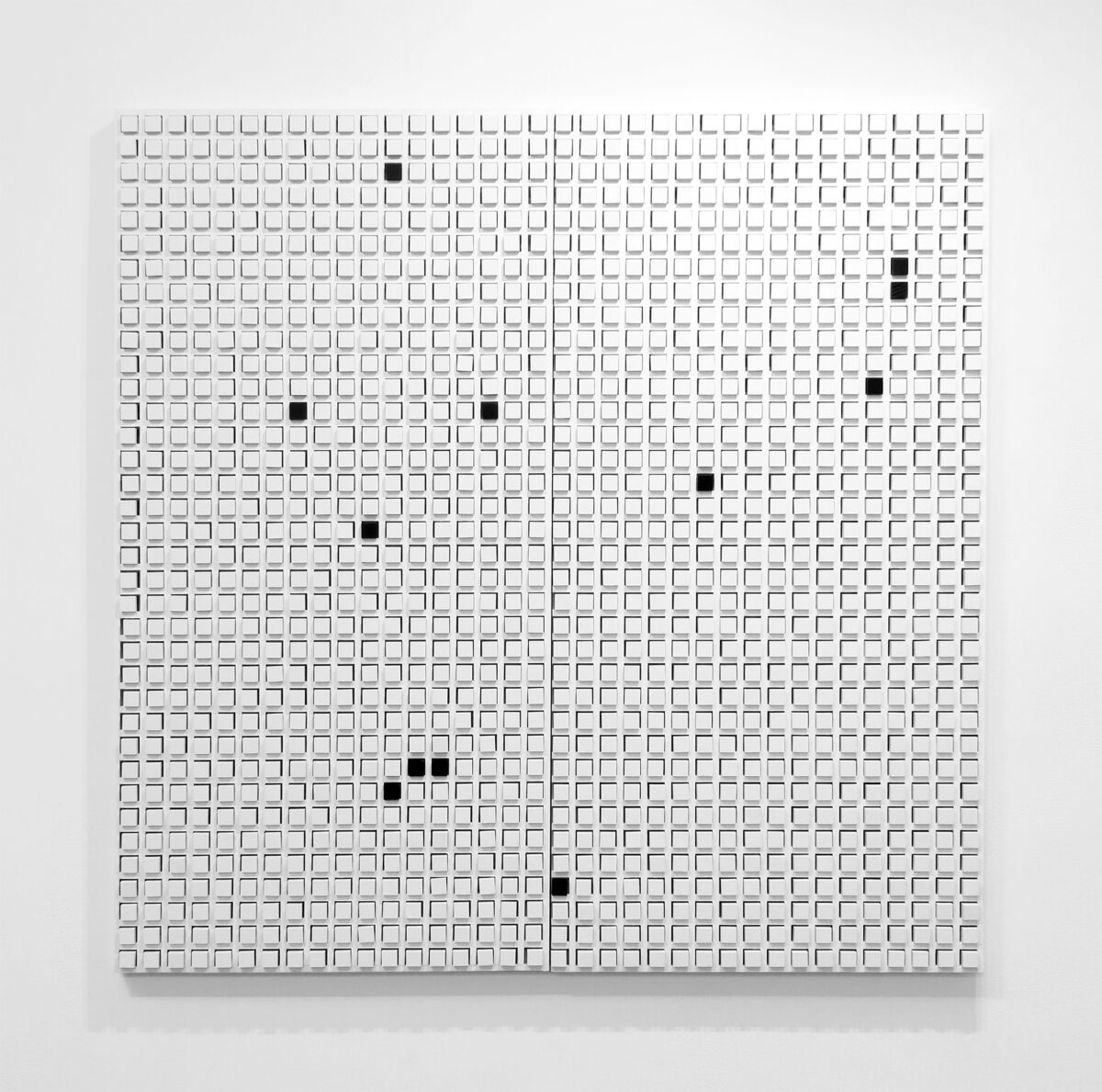
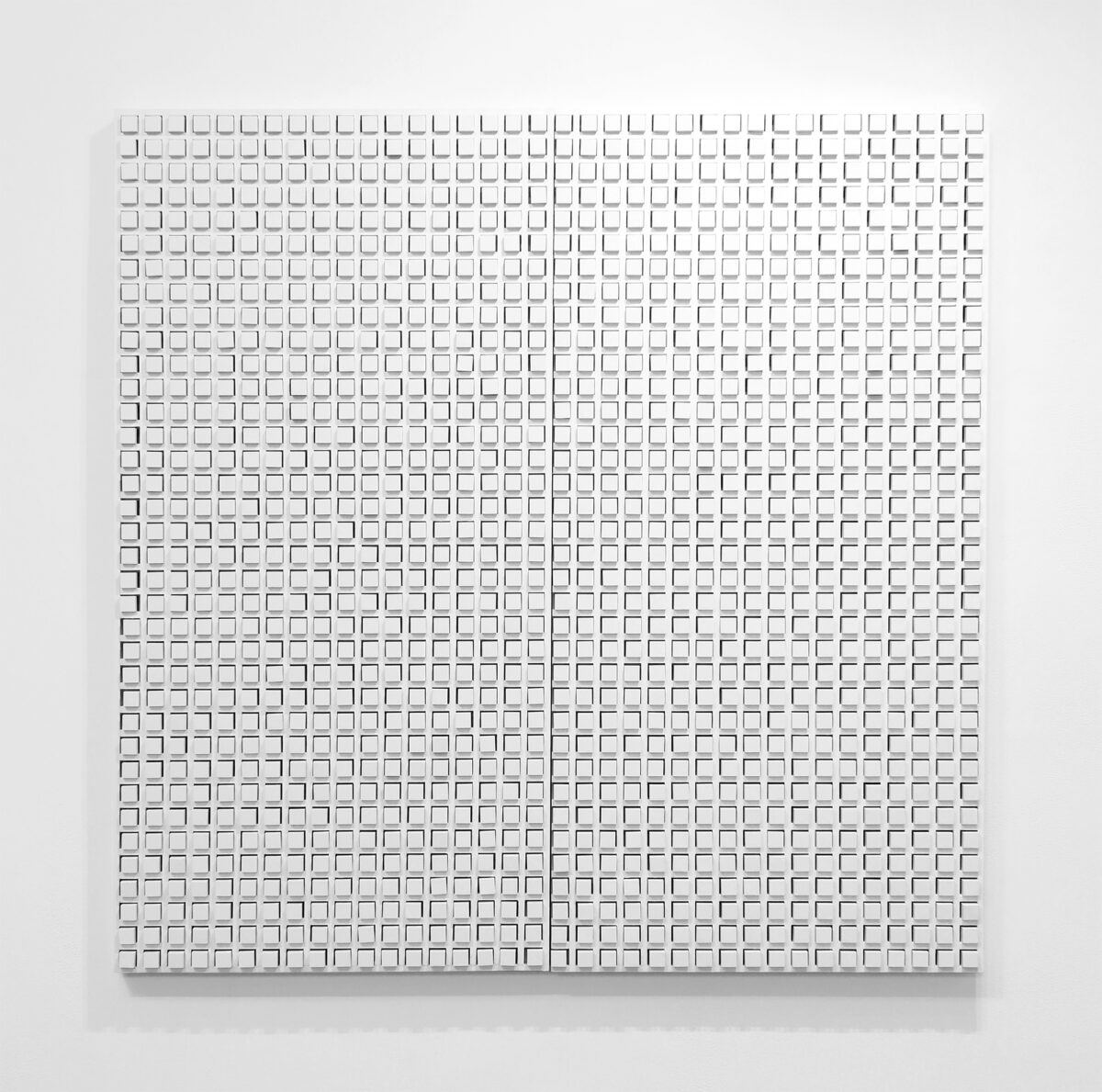
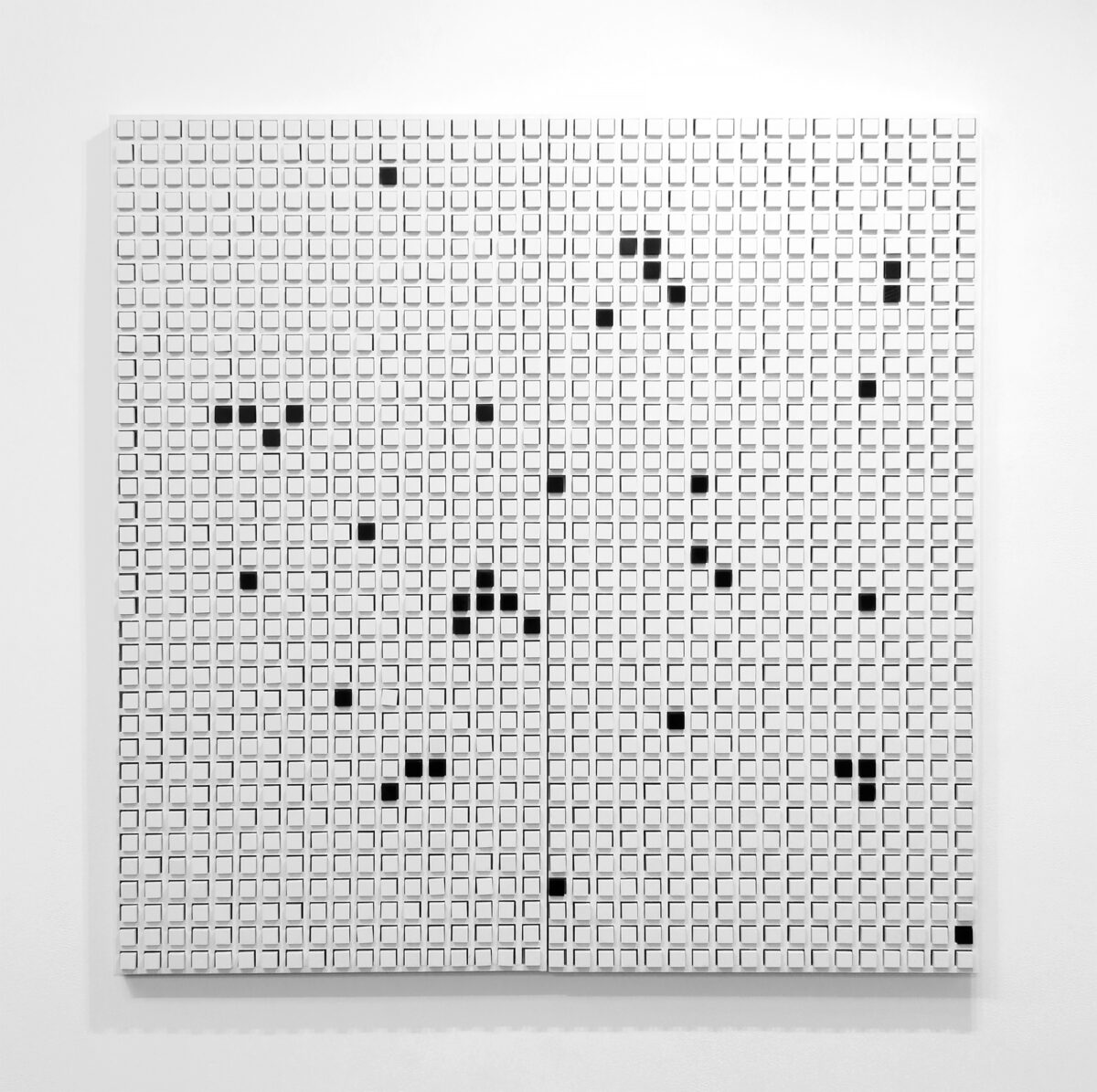
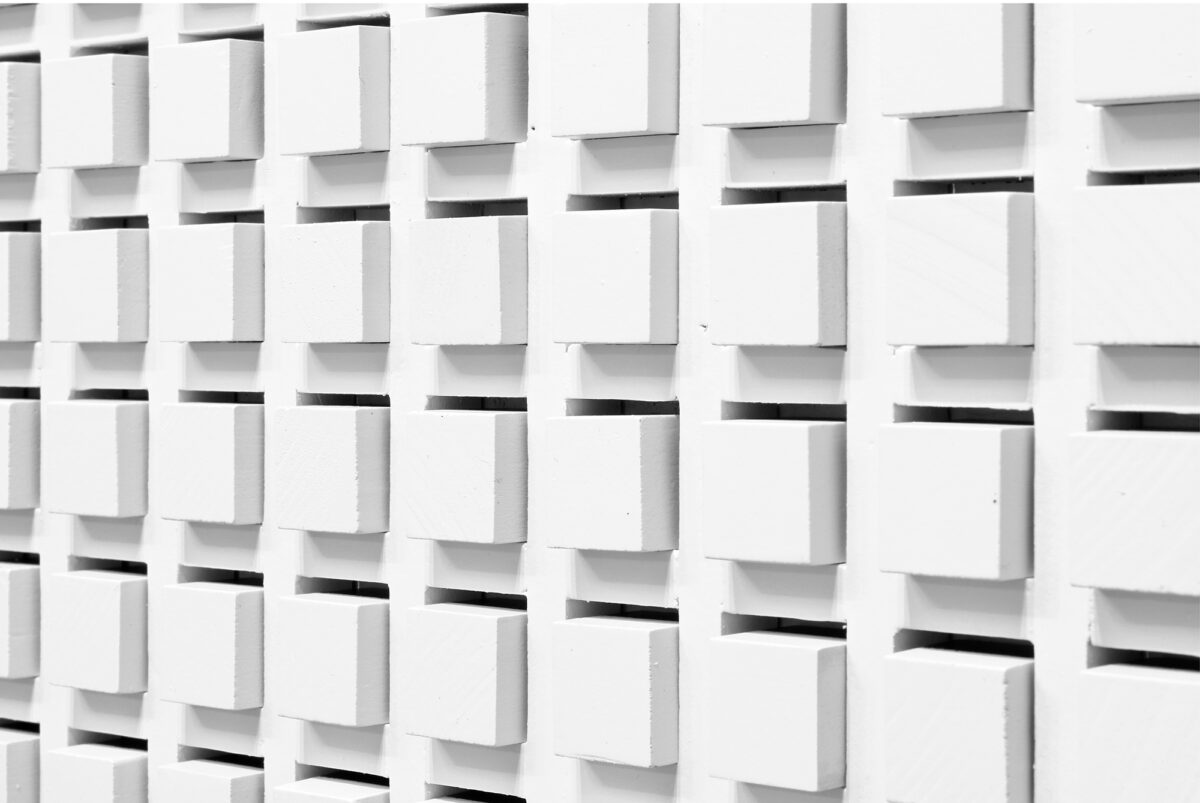
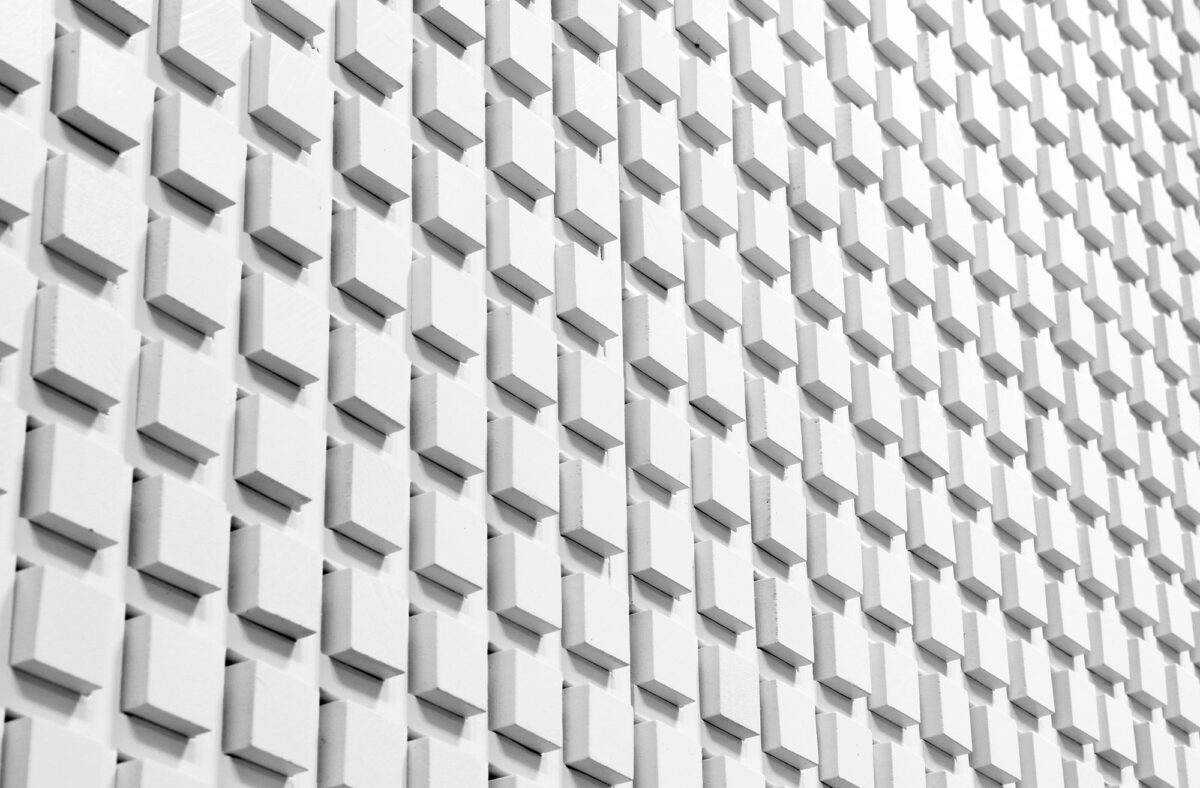
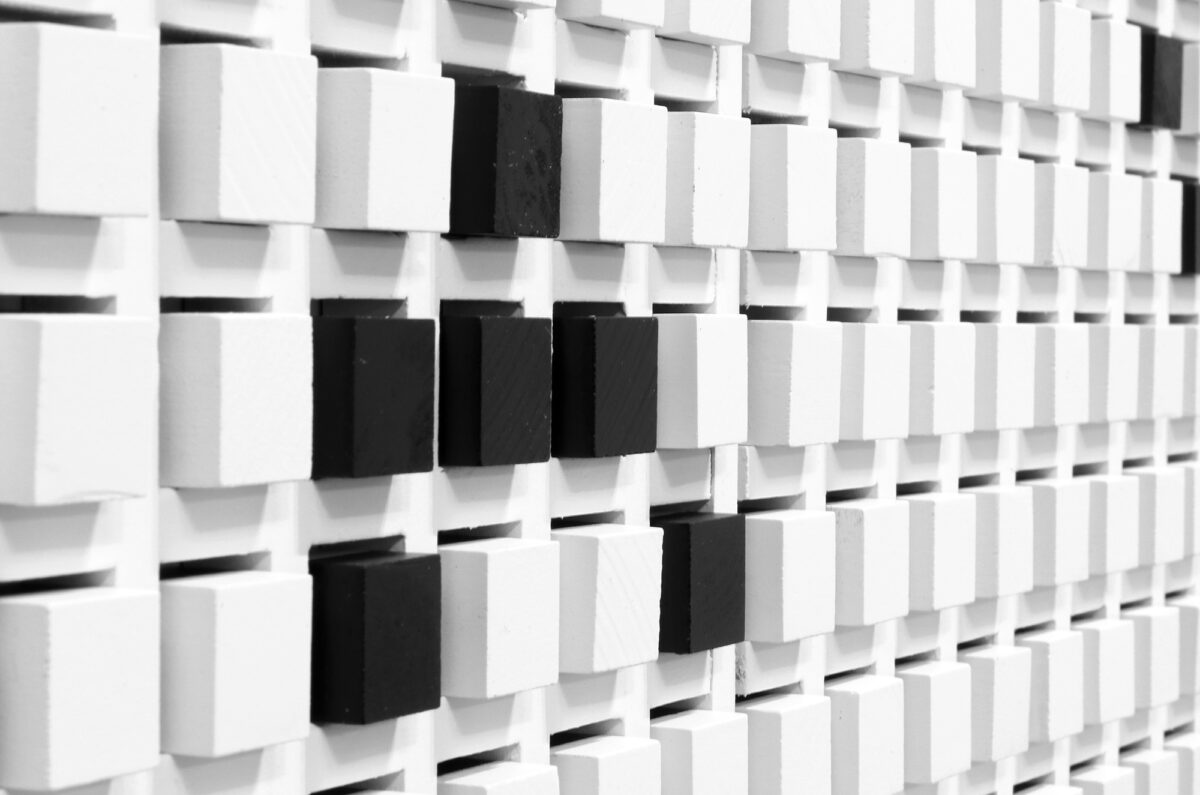
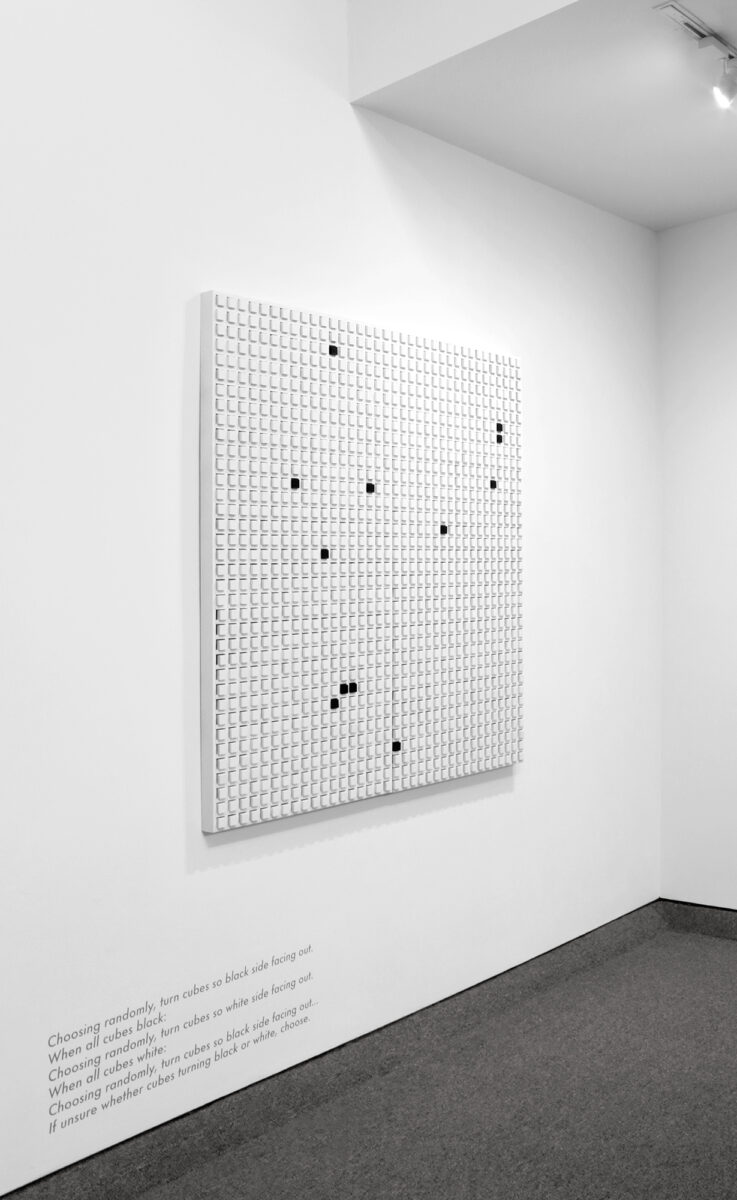
White, wall-mounted case containing 1,296 acrylic-painted wooden cubes (each cube painted half white and half black)
Signed, dated and titled, verso
At first, all cubes turned so white half facing out, black half concealed.
Working instructions:
“Choosing randomly, turn cubes so black side facing out.
When all cubes black: Choosing randomly, turn cubes so white side facing out.
When all cubes white: Choosing randomly, turn cubes so black side facing out…
If unsure whether cubes turning black or white, choose.”
Notes:
Instructions as much part of installation as other elements
Audience does not always follow instructions/interprets instructions; this is part of the art.
(Inventory #31558)
White, wall-mounted case containing 1,296 acrylic-painted wooden cubes (each cube painted half white and half black)
Signed, dated and titled, verso
At first, all cubes turned so white half facing out, black half concealed.
Working instructions:
“Choosing randomly, turn cubes so black side facing out.
When all cubes black: Choosing randomly, turn cubes so white side facing out.
When all cubes white: Choosing randomly, turn cubes so black side facing out…
If unsure whether cubes turning black or white, choose.”
Notes:
Instructions as much part of installation as other elements
Audience does not always follow instructions/interprets instructions; this is part of the art.
(Inventory #31558)
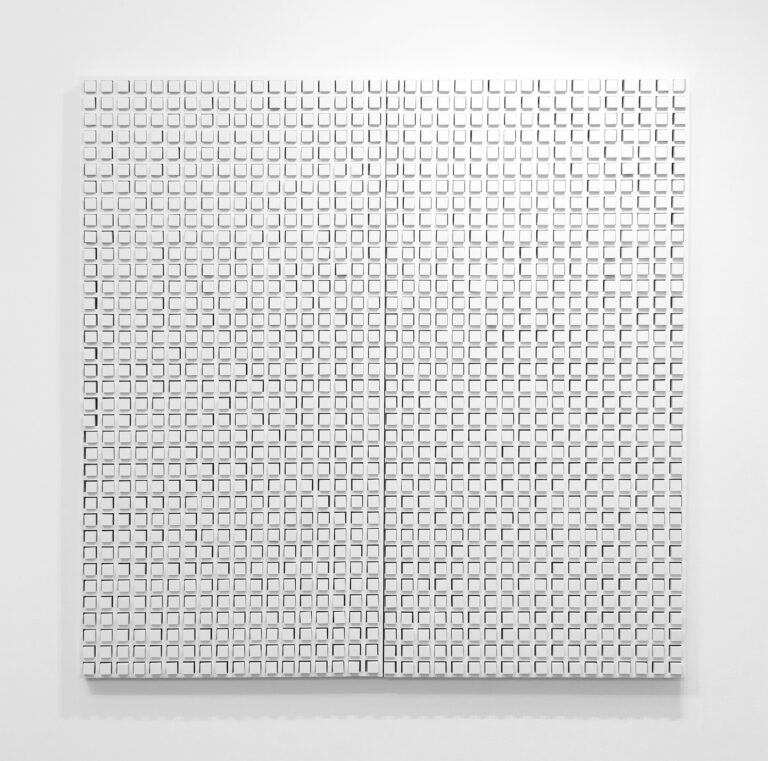
Amy Stacey Curtis (b. 1970, Beverly, Massachusetts) focuses on participatory works. She initiates each of her works which are then perpetuated and resolved by audience. For each installation, Curtis instigates a desired vision through provided guidance (these instructions are as much part of installation as other elements). Then, by relinquishing these concepts to her collaborative audience, her work sometimes proceeds in unanticipated ways. Key to Curtis is the fact that the audience does not always follow instructions/interprets instructions and that this is part of the art.
The instructions for “Turn II” are:
“Choosing randomly, turn cubes so black side facing out.
When all cubes black:
Choosing randomly, turn cubes so white side facing out.
When all cubes white:
Choosing randomly, turn cubes so black side facing out…
If unsure whether cubes turning black or white, choose.”
From 1998 to 2016, Curtis completed an 18-year project, 9 solo-biennial exhibits of large-in-scope, interactive art in 9 vast mill spaces throughout Maine. In the end, Curtis mounted 81 participatory installations while cleaning, by hand, each historic space (averaging 25,000 square feet). Each solo biennial was a 22-month process exploring a different, predetermined theme and inviting audience to activate each exhibit’s 9 unique works. After her 18-year project was finished, Curtis had been working toward new interactive projects in her studio when she was debilitated by neurological illness. After 2 psychiatric wards, the start of severe movement and speech disorder, and 15 months of unknowns, it was finally determined that Curtis had suffered a brain injury caused by never-treated Lyme Disease. Since the start of her disability in March 2017—all while progressing from wheelchair, to walker, to cane, back to her feet—Curtis has been presenting new interactive concepts with help from assistants, curators, and the arts community. Curtis works from Lyman, Maine.
Curtis has been the recipient of The Maine Arts Commission’s 2005 and 2017 Individual Artist Fellow For Visual Art and the recipient of numerous grants including those from Berkshire Taconic Community Foundation, Foundation for Contemporary Arts, Robert Rauschenberg Foundation, and Samuel I. Newhouse Foundation, Curtis has exhibited interactive art internationally and her work is in numerous museum collections.
Amy Stacey Curtis (born 1970, Beverly, Massachusetts) is an installation artist focusing on participatory works. The Maine Arts Commission’s 2005 and 2017 Individual Artist Fellow For Visual Art and the recipient of numerous grants including those from Berkshire Taconic Community Foundation, Foundation for Contemporary Arts, Robert Rauschenberg Foundation, and Samuel I. Newhouse Foundation, Curtis has exhibited interactive art internationally.
Curtis initiates each of her works which are then perpetuated and resolved by audience. For each installation, Curtis instigates a desired vision through provided guidance. Then, by relinquishing these concepts to her collaborative audience, her work sometimes proceeds in unanticipated ways. These uncontrollable unknowns are likewise crucial components of her work.
From 1998 to 2016, Curtis completed an 18-year project, 9 solo-biennial exhibits of large-in-scope, interactive art in 9 vast mill spaces throughout Maine. In the end, Curtis mounted 81 participatory installations while cleaning by hand each historic space (averaging 25,000 square feet). Each solo biennial was a 22-month process exploring a different, predetermined theme, inviting audience to activate each exhibit’s 9 unique works.
After Curtis’s 18-year project was finished, she had been working toward new interactive projects for 5 weeks in her studio, when she was debilitated by a neurological illness. After 2 psychiatric wards, the start of severe movement and speech disorder, and 15 months of unknowns, it was finally determined that Curtis’s brain had been attacked by untreated Lyme Disease.
Since the start of her disability in March 2017, Curtis has been moving forward and exhibiting new interactive concepts with help from assistants, curators, and the arts community. Curtis works from Lyman, Maine.
10 Newbury Street, Boston, Massachusetts 02116
617-262-4490 | info@krakowwitkingallery.com
The gallery is free and open to the public Tuesday – Saturday, 10am – 5:30pm